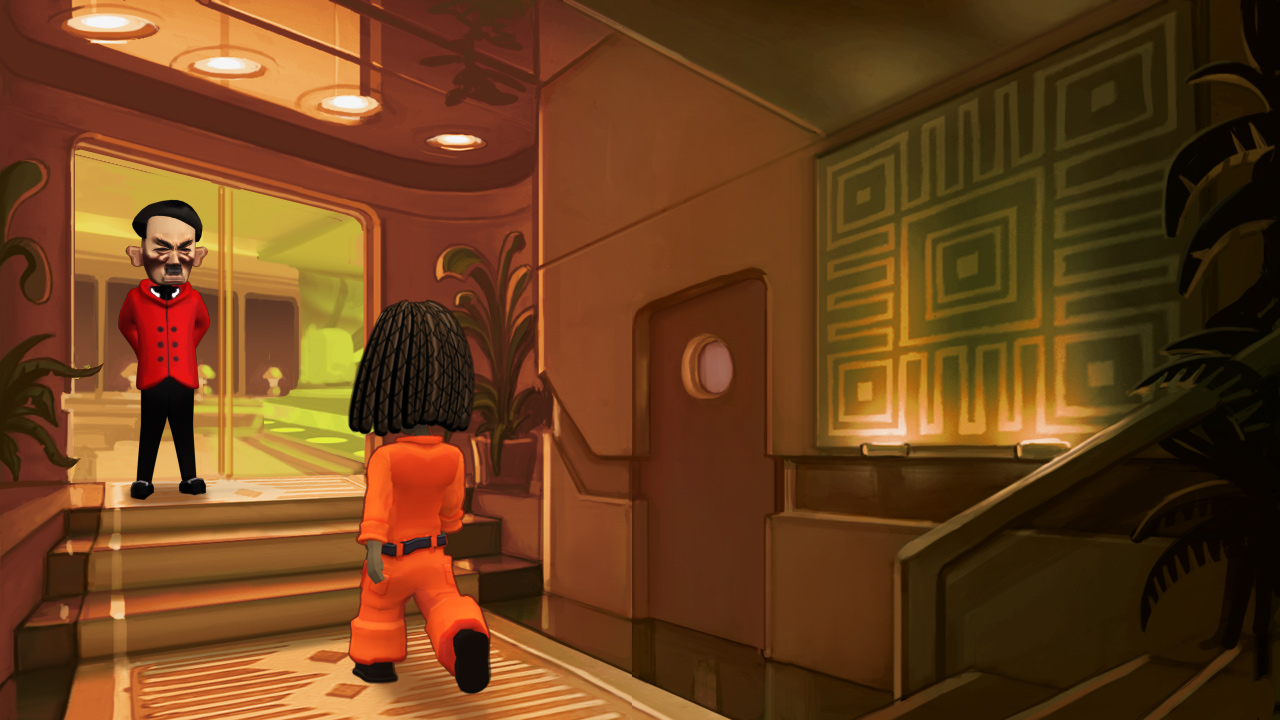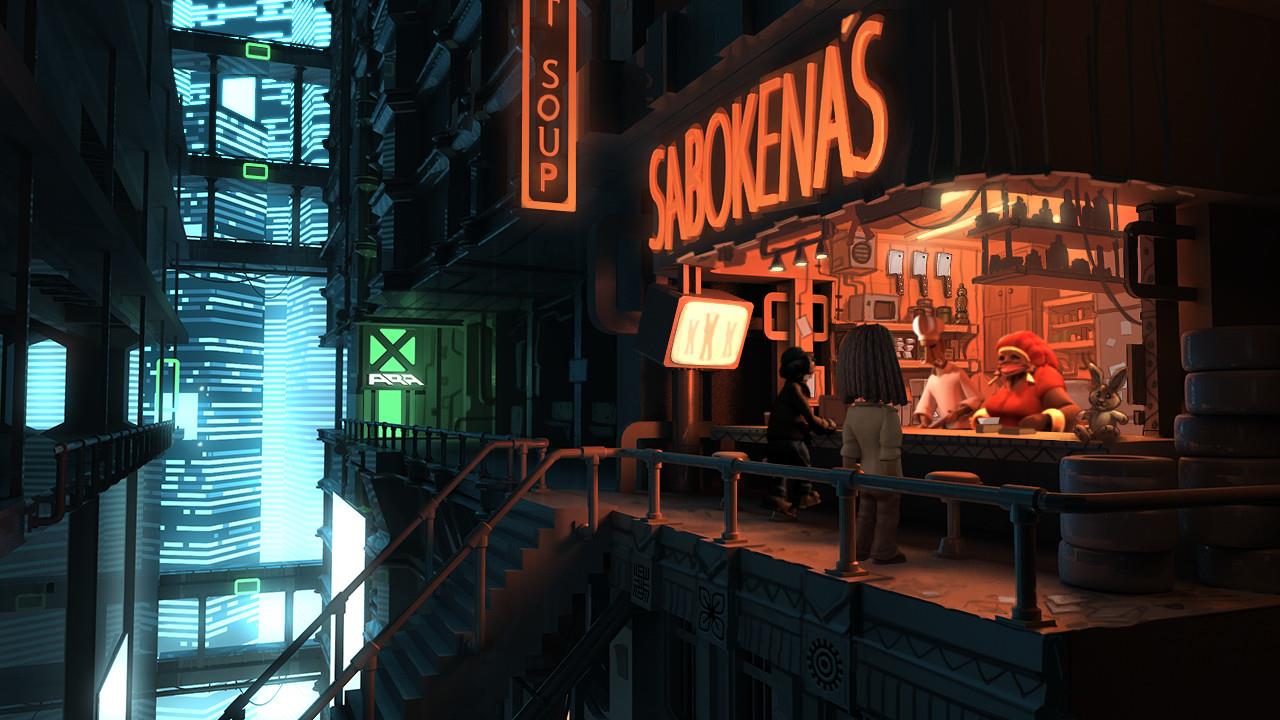Search
[{{{type}}}] {{{reason}}}
{{/data.error.root_cause}}{{{_source.title}}} {{#_source.showPrice}} {{{_source.displayPrice}}} {{/_source.showPrice}}
{{#_source.showLink}} {{/_source.showLink}} {{#_source.showDate}}{{{_source.displayDate}}}
{{/_source.showDate}}{{{_source.description}}}
{{#_source.additionalInfo}}{{#_source.additionalFields}} {{#title}} {{{label}}}: {{{title}}} {{/title}} {{/_source.additionalFields}}
{{/_source.additionalInfo}}- Details
- Category: Computer
- By Sam George
- Hits: 3316
The Journey Down: Chapters One - Three (PC)

The Journey Down
Developed by: SkyGoblin
Published by: SkyGoblin
Release date: September 21, 2017 (PC, iOS), May 29, 2018 (PS4), Jun 1, 2018 (Xbox One), Jul 8, 2018 (Switch)
Available on: Windows, macOS, iOS, Linux, Xbox One, PlayStation 4, and Switch
Genre: Adventure, Point & Click
Number of players: Single player
ESRB Rating: Teen for language, suggestive themes, use of tobacco, use of alcohol, and violence
Price: Chapter 1: $4.99 (App Store), $8.99 (Steam); Chapter 2, Chapter 3: $6.99 each (App Store), All Chapters: $32
Thank you, SkyGoblin, for sending us review keys!
The Journey Down is, above all else, sincere. The worldbuilding is patently absurd, yet it is presented with such innocent passion by the many voice actors that I bought into it gladly. The art style is sometimes unpolished, but its bold and consistent take on an “Afro-Caribbean” society is unique and versatile. Presentations of government corruption don’t come off as preachy, nor do jokes about the characters’ poverty come off as cheap. Each of the separately-sold three chapters has a developer diary unlocked by beating it; they show a team that really cared about what they were creating. A childish logic underlies all of the puzzles - the kind of logic that declares that sticking used gum to a fishhook enables a fishing pole to pull the lid off a cookie jar. We know that a fire extinguisher doesn’t inflate a raft. But something in me feels like it ought to. The better adventure games of old, I suggest, run on logic of this sort. They allow the world to work the way some of us believed it did when we were kids. No matter how realistically insane, the puzzles make “sense.” Those who can tap into a simpler frame of mind where filling a can of dried-up crab meat with hot liquid turns it into a stew will find a lot to enjoy in The Journey Down.
Main character Bwana and his partner Kito grew up as brothers, hearing stories of the mystical Underland from their adoptive father. One day that father disappeared, and the government began suppressing knowledge of the Underland. Now, Bwana and Kito run a small gas station and charter plane business, with no idea that in their attic is a book with knowledge that many, many people would kill for. A visit from a university researcher kicks off this plot of secrecy, corruption, greed, and discovery.

Strong Points: Well-designed puzzles; good writing backed by excellent voice acting; creative art style; fun soundtrack
Weak Points: Some puzzle solutions only make sense in retrospect; plot resolutions are rushed; game sometimes freezes when resizing the window and leaving full-screen
Moral Warnings: Main character must steal to progress; bloodless gun and mob violence portrayed; some gags about sexual topics; mild language turns into multiple uses of s*** and God’s name in vain by the third episode; ancient supernatural protectors of a mythical land exist, are referred to as gods, and must be “offered” items in one puzzle; malicious government-corporate collusion is portrayed and rebelled against by the main characters; main characters must break out of prison; humorous portrayal of protest and police response; drinking and smoking portrayed
Despite stylings of a detective story, there is more Indiana Jones in The Journey Down’s DNA than noir. It is a comedic action romp that begins with mob kidnapping and ends with the resurrection of an ancient evil god. The humor in the story comes from the personalities of pretty much every character, from the bit part of a club bouncer to Bwana and Kito’s brotherly ribbing and pranking. These are large personalities, and each of them could dominate a scene in a more subdued story. Character heads are sometimes modeled after African tribal masks and convey a lot more about the people than the wooden style might suggest. A variety of accents ensures that repeating characters are recognized immediately. As a side effect, a few small roles combine with a strong accent to produce ethnic stereotypes. If this is offensive to any players, I hope they at least recognize that it is not negative commentary on a people group. It’s for fun, and I found the variety of characters quite engaging.
The bright personalities offset the darkness of a game that deals with dreary themes. Throughout the episodes there is government corruption, greed-driven destruction of natural resources, and off-handed comments about the government “eliminating crime among the poor by eliminating the poor.” No one seems to be moping about it; most of the downtrodden go about their lives with an air of acceptance and humor. This is not a dark political commentary; remember, the game’s climax is the release of an ancient force of evil. I could say a lot about the world, from the ocean made of mist to the all-powerful electric company. You learn a lot about the social structures and lives of the people simply by playing the game, and straight descriptions wouldn’t give you a sense of quite how ridiculous the connection is between that mob kidnapping and the evil god. In the end, the resolution of each episode felt rushed. I may as well just say that the final solution involves rock and roll.
In context, that makes sense, as do most of the puzzle solutions. Along with many classic point-and-click adventures, the player overcomes obstacles by collecting items from the environment, combining them, and using them on people and other items. It’s hard to speak about the puzzles without spoiling the core gameplay. Suffice to say that the game is structured very well. Each episode is built around one key area, with short branches spreading out from there. It is hard to get lost and easy to move around. The main character is willing to take anything regardless of who owns it, at one time saying, “If you can afford [some item], then you can afford to buy a new one.” Most of the time the game will let you collect items long before you need them. I found this resulted in many cases of, “Aha, I know just what you need.” Consequently, many puzzles were easy. However, they don’t usually feel easy. Several times I had to take stock of what I’d collected, and there’s a satisfaction that comes with knowing when to pull out that model boat. Not every puzzle is neat; a couple, especially in Chapter One, felt underdeveloped. Still, the quality starts high and steadily increases as the game goes on. The Journey Down’s puzzles are a fine, if standard, example of the point-and-click adventure genre, so those who don’t enjoy the genre’s gameplay tropes probably won’t enjoy this game.

Higher is better
(10/10 is perfect)
Game Score - 84%
Gameplay - 15/20
Graphics - 8/10
Sound - 10/10
Stability - 4/5
Controls - 5/5
Morality Score - 58%
Violence - 6/10
Language - 5/10
Sexual Content - 7/10
Occult/Supernatural - 6/10
Cultural/Moral/Ethical - 5/10
Those who want to avoid foul language should also avoid The Journey Down. Few characters swear, but those who do tend to do so every time you talk to them. The level starts minimal and increases across the chapters. By Chapter Three, s*** is heard in its American and British variants, and characters occasionally take the Lord’s name in vain. Also introduced late are the old gods of the Underland. They unambiguously exist in the universe of the game, and one puzzle involves giving each of them an offering tailored to their personality. Throughout the game there is gun violence and mentions of piracy. The main characters fight against a corrupt corporation with explosions, break-ins, and guns. Some characters are bloodlessly killed on-screen. Many characters drink and smoke. Two jokes in the game were undeniably, though not explicitly, about sexual things. Specifically, a one-off character runs a dirty 900 number service, and Bwana accidentally shows another character a tape which is all but said to contain porn. These gags are of the Shrek form, where a child might not understand the nature of the content.
The game’s technology and stability are fine. The graphics drop in quality during certain cutscenes but are otherwise good. Sound design and music are excellent, with a jazzy soundtrack whose main flaw is how often tracks shift when moving between locations. Resolution has more issues. Tabbing away from full-screen mode caused the game to freeze on a white screen that Windows Task Manager could not conquer, and resizing in windowed mode could create white and black bars. When not messing with the display, the game had no stability problems.
I enjoyed The Journey Down a lot, and I think people who like point-and-click adventure games would enjoy it as well. If that doesn’t describe you, the price might be too steep. Clocking in at 6-7 hours total, The Journey Down is at least no shorter than many larger-budget games. The price on mobile for all chapters is less than half of what it is on other platforms for what seems to be the same game, though I have only played the PC version. The first chapter can be tried on its own, in any case. It is the cheapest and shortest, with the lowest quality to match. Everything about it gets better in later chapters. This game is clearly a labor of love, and it doesn’t take long for skill in development to rise to the passion that was there to begin with.








